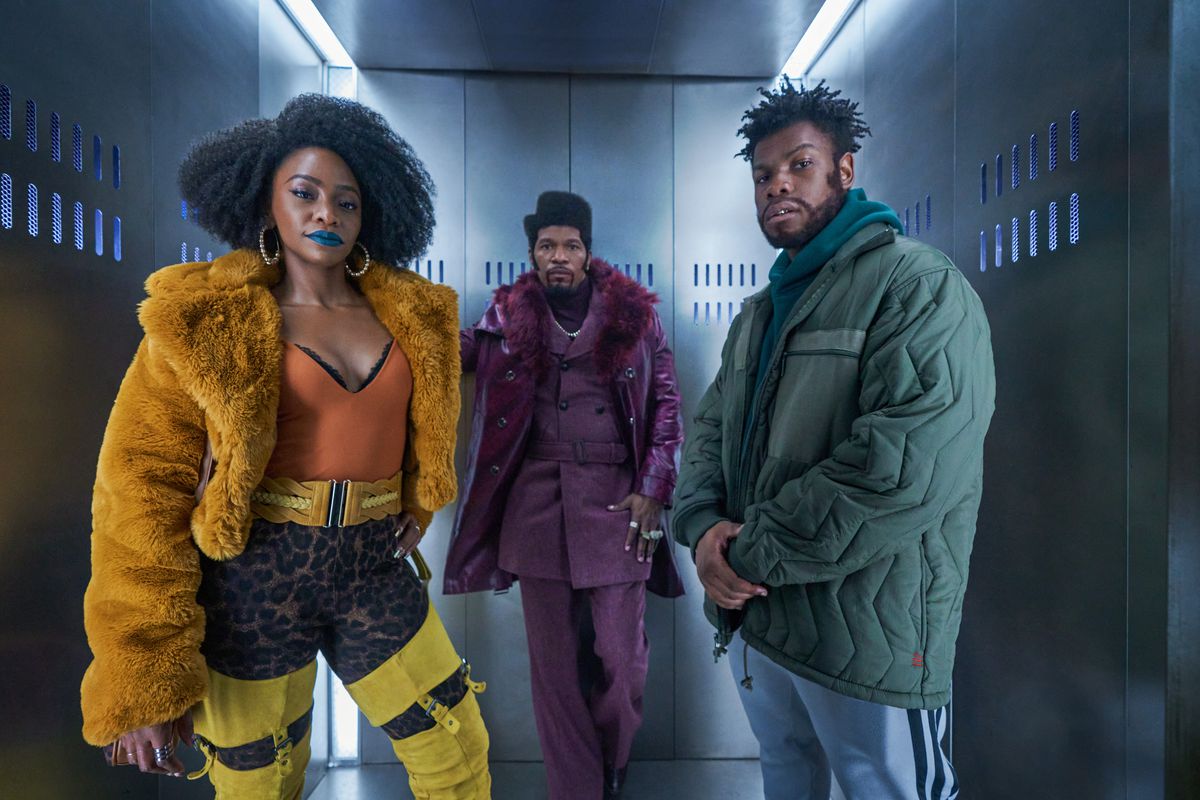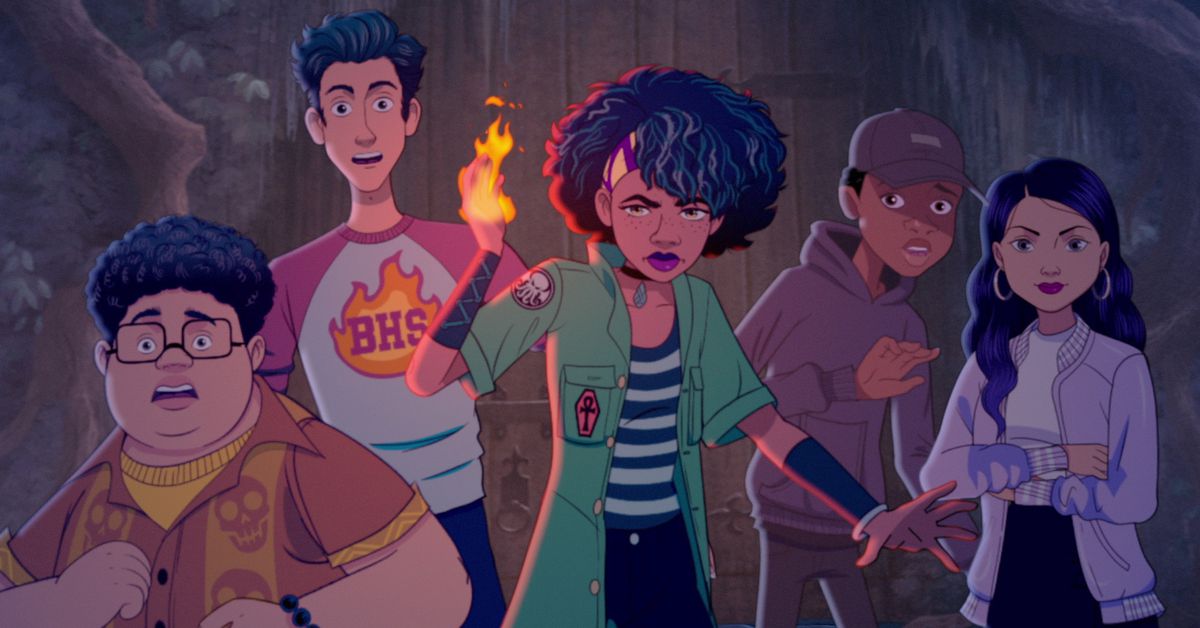I’ve been waiting to watch Junk Head for over a decade.
That may sound like an exaggeration, but I’m being serious: Takahide Hori, the director and lead animator, first teased the dark stop-motion sci-fi horror film all the way back in 2013 when he released the first 30 minutes of the movie online as a stand-alone short. Despite being completed in 2017 and receiving rave reviews on the festival circuits, the feature-length version of Junk Head wasn’t released in Japanese theaters until 2021 — with virtually no word on an American release afterward.
So you can imagine my surprise when I discovered that Junk Head was available to rent on Amazon, without any sort of fanfare or announcement. I’m happy to report back that Junk Head was worth the wait, and that it would make for an excellent double feature with another similar stop-motion passion project: Phil Tippett’s Mad God.
Junk Head takes place in a distant future where humanity has devised a means of indefinitely extending their lifespans at the cost of losing the ability to reproduce. When a mysterious virus wipes out much of the remaining human population, a cyborg explorer volunteers to study the unique reproductive system of the Marigans — artificial humans created centuries ago who live in the bowels of the planet — as part of a last-ditch effort to save humanity. Unfortunately, the cyborg’s craft is damaged mid-descent, injuring the pilot and destroying their body — save for their head. With no memory of their prior life, the cyborg must navigate the wondrous and terrifying underworld in search of not only their own identity, but an answer to the question of humanity’s imminent future.
Produced over the course of seven years by Hori, a self-taught filmmaker and artist who drew on his professional experience as a theme park interior decorator and carpenter to sculpt each of the characters by hand, Junk Head was painstakingly animated across 140,000 stop-motion shots. Standout sequences include Junk Head being taken in by a village of haggard engineers who are governed by a group of tall, muscular female elders clad in red latex suits and platform boots, as well as the film’s climactic fight between a trio of comical monster hunters and a hulking Giger-like monstrosity. Both scenes stand as testaments to Hori’s studious attention to detail and his exacting creative vision.
Given the quality of the film’s animation, one would be surprised to learn that the decision to produce Junk Head as a stop-motion film was motivated more in part by Hori’s relative inexperience and gung-ho enthusiasm for filmmaking than it was by deliberate intention. “Everything started from my misunderstanding,” Hori said in an interview with Little White Lies. “I’m not really great at computers or graphics, and you have to learn about software, you have to learn about computers. I thought my brain doesn’t have that kind of capacity. But whereas the stop-motion animation, all you have to do is that you create it all, you move it, take a shot, easy. How wrong was I?” The filmmaker has cited Ridley Scott’s Alien and Clive Barker’s Hellraiser as major inspirations on Junk Head, as well as Tsutomu Nihei’s manga Blame.
:no_upscale()/cdn.vox-cdn.com/uploads/chorus_asset/file/24868445/JUNK_HEAD_04_990x557.jpg)
The influence of the latter is particularly evident in the film’s premise and set design, emulating the dark post-human industrial aesthetic and megalithic structures Nihei is synonymous with. That’s not to say Junk Head is all doom and gloom; the film has a surprising amount of levity and mischievous humor balanced against its more macabre sequences and grotesque action, culminating in an experience that feels at once whimsical and dystopian. One of my favorite sequences is when Junk Head, now equipped with a makeshift body that impairs his ability to speak, is set on an errand in order to procure some “mashrooms” for a celebratory dinner. Along the way he comes across a conniving trickster who, under the guise of helping Junk Head navigate the alien terrain of this strange underground world, concocts various ploys to steal the mashrooms for himself and leave Junk Head stranded. It’s made even more hilarious by how the camera repeatedly smash cuts to close-ups of the thief’s exaggerated scheming smirk.
It’s this tonal quality that Hori’s film shares with Phil Tippett’s 30-years-in-the-making opus Mad God: a Boschian nightmare epic about an assassin pitted in a symbolic war between the stratas of hell as they embark on a perilous descent through phantasmagorical landscapes teeming with horrific creatures and comical critters. Both films evidence a stubborn love for the fastidious craftsmanship that goes into filmmaking, emphasizing stories less concerned about the capital-P “Plot” of sequential storytelling and more focused on world-building that engrosses their audiences, immersing them in every intricate detail and character throughout their respective durations.
Hori has said Junk Head represents the first installment of an intended trilogy of films, with the next movie set to incorporate more 3D printed assets and computer visual effects. After finally having the opportunity to sit down and watch his first film, I’m eagerly looking forward to what other stories he has to show in this world. If my experience with Junk Head has reminded me of anything, it’s that the best things in life — especially when it comes to art — are worth waiting for.
Junk Head is available to rent and purchase on Amazon and Vudu. Mad God is available to stream on Shudder or AMC Plus, and available to rent or purchase on Amazon and Vudu.






